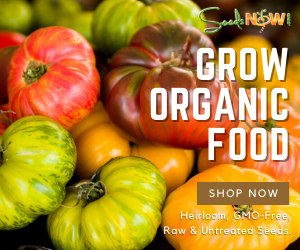The Art of Canning
T
he art of canning and preserving of vegetables, whole fruits and fruit preserves, jellies, and relishes have long-been important and extremely safe methods for ‘keeping’ seasonal foods so they can be enjoyed throughout the entire year. Many of us have fond memories of summer days when the entire house was busy with canning activity and filled with the great smells of foods to be "put up’. But with today’s easy access to processed foods, it is understandable why only those who have the time and inclination would take on the process. At the same time, many feel that they just don’t know enough about the process and they don’t want to risk getting it wrong….something that could have dire consequences. When looking for advice and information on preserving food, try to avoid old, outdated cookbooks, and undocumented food shows on TV. Your best source for current information on processing instructions are publications put together by the U.S. Department of Agriculture (search ‘Complete Guide to Home Canning, 2009’ at www.uda.gov), College Cooperative Extension Services (search by specific college), and major food processing equipment manufactures.
THE PROCESS
The canning process involves placing a variety of individual raw vegetables and fruits or prepared foods like relishes, jellies, jams, compotes into jars or similar containers and heating them to a temperature that destroys micro-organisms that cause food to spoil. During this heating process, air is driven out of the jar and as it cools, a vacuum seal is formed. This vacuum seal prevents any air from getting back into the product and allowing contaminating micro-organisms to reform. There are two safe ways of processing food: the Boiling Water Bath Method and the Pressure Canner Method:
Boiling Water Bath Method is safe for tomatoes, most fruits, all jams, jellies, pickles, and many other home-made relishes and preserves. In this method, jars of food are heated completely covered with boiling water (212°F at sea level) and cooked for a specified amount of time.
Pressure Canning Method is the only safe method of preserving vegetables, meats, poultry and seafood. Jars of food are placed in 2 to 3 inches of water in a special pressure cooker which is heated to a temperature of at least 240° F. This temperature can only be reached using the pressure method. A microorganism called Clostridium botulinum is the main reason why pressure processing is necessary. Though the bacterial cells are killed at boiling temperatures, they can form spores that can sometimes withstand these temperatures. The spores grow well in low acid foods, in the absence of air, such as in canned low acidic foods like meats and some vegetables. When the spores begin to grow, they produce the deadly botulinum toxins.
The only way to totally destroy these spores is by pressure cooking the food at a temperature of 240°F or above, for a specified amount of time depending on the type of food and altitude. Foods that are low acid have a pH of more than 4.6 and because of the danger of botulism, they MUST be prepared in a pressure canner. Typically, low acidic foods include most meats, seafood, poultry, and dairy products. High acid foods have a pH of 4.6 or less and contain enough acid so that the Clostridium botulinum spores cannot grow and produce their deadly toxin. High acidic foods can be safely canned using the boiling water bath method. High acidic foods include tomatoes, most fruits, and properly pickled vegetables. Note that some fruits and certain foods like tomatoes and figs, that have a pH value close to 4.6, need to have acid added to them in order to use the water bath method. This is accomplished by adding a little of lemon juice when preparing the foods.
For more of THE ART OF CANNING, click here


















